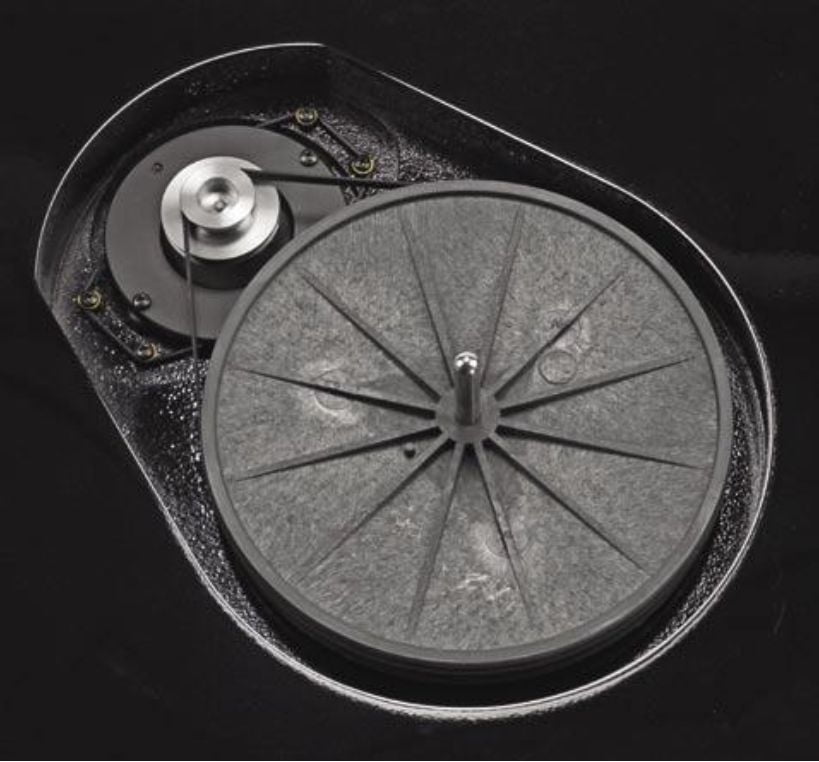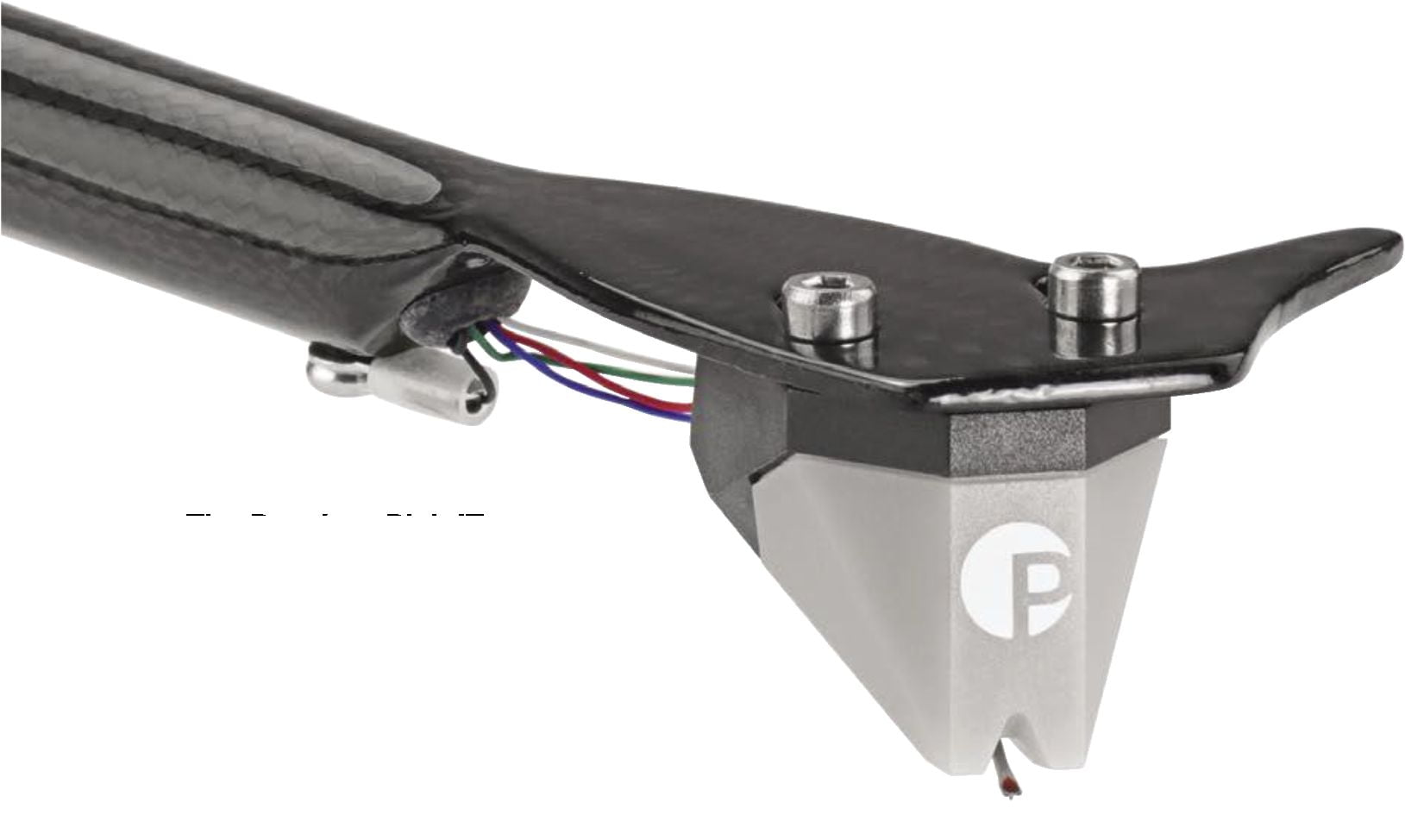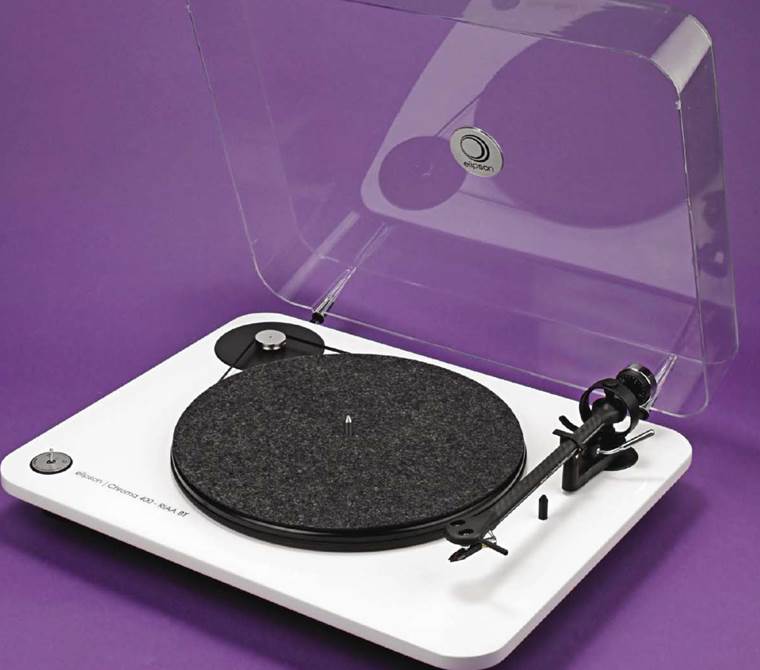Pro-ject X1 Review – X1 Excellence
Pro-Ject’s latest X1 budget turntable package will appeal to enthusiasts thinks Noel Keywood. Read our Pro-ject X1 Review.
The Pro-Ject X1 turntable package I’m reviewing here is over twenty years old Pro-Ject say but has been continually updated. Some parts show their age, yet under the skin this budget turntable package has become surprisingly sophisticated, approaching Direct Drive, as I’ll explain later. With the X1 in latest form, as tested here, you get turntable, arm and cartridge for £ all-in, but no phono stage. This is basically a two-speed turntable, 33 and 45rpm, with an unusual 78rpm option that needs a belt change – so for occasional use. Pro-Ject (Austria) largely make their own parts, including the carbon fibre/aluminium arm of the X1 – no Rega here – and the solid MDF plinth with hinged acrylic dust cover. Ours had a gloss black finish and felt sturdy, weighing 7kgs.
Lacking a suspension system the X1 needs a strong shelf or such like for support, dimensions of 415mm wide and 355mm deep meaning a deep shelf too – as always with turntables since the platter alone is 12in deep. Although 125mm high with lid closed, with it open 40cm clearance is needed, within a shelving system for example.The lid moves on friction hinges without counterbalance, unlike slicker mechanisms found in Thorens and Audio Technica turntables. Pro-Ject say acrylic dust covers add colouration and are best removed, in justification. There are three height adjustable feet to ensure the unit sits level.
Mains power comes from an external wall-wart supply that delivers 15V (800mA) through a slim lead I metre long; the turntable has no mains earth so hum from a potential earth loop is eliminated a common and effective solution to this issue with turntables.
The 15V switch-mode supply feeds an internal electronic motor control board that brings benefits. Choosing 33rpm or 45rpm is made easy by two small push buttons on the plinth, each accompanied by a blue LED that winks until speed lock – simple and quick. If you want 78rpm the platter must be lifted off and another (supplied) belt used on a larger pulley diameter – not so easy.
But 78rpm is a side issue: electronic motor control can offer rock solid speed stability with 33s and 45s – and it does here. Measurement showed the X1 held speed with Direct Drive precision good going for an old design, except that beneath the skin it is not now an old design, Pro-Ject having installed a modern precision motor and control board. Instead of the watery tone stability of belt drive, caused by speed wander, the X1 holds speed with a precision few belt drive turntables can match.

The platter support hub with flat ground belt threaded around the motor pulley. Rather than stretch the belt to fit the large 78rpm diameter Pro-Ject supply a longer belt.
This demands a finely machined main bearing without play and precession. Here Pro-Ject use a stainless steel shaft in a phosphor bronze sleeve, machined so close the platter takes time to sink into the bearing. A flat, precision-ground rubber belt and concentric hub contribute to this turntable’s unusual speed stability.
The sound of a turntable – its ‘colour’ – is affected by the platter and here Pro-Ject employ a clear acrylic platter 20mm thick and 1.5kgs in weight, covered by a thin felt mat. Of all the platter materials, acrylic gives the best sound in my experience – neutral in that it lacks the zing of metal platters but has more depth, complementing the sound of a vinyl disc.

Rear dust cover friction hinges, three height adjustable feet, motor with control board and, at left here, gold plated phono socket outputs, with earth terminal. An external power supply delivers 15V d.c. in.
The arm is constructed from carbon fibre and aluminium, looks good but is where the X1 is less impressive. It’s one-piece – no removable head shell. The finger lift is flat – not curved upward to fit over a finger – and it slid out of my grasp. I prefer to manually cue an arm rather than use a lift/lower mechanism and here I found the Pro-Ject arm difficult.
The arm’s bias mechanism comprises a weight on a thread, passing over a stiff wire support loop – and getting this set up was a rigmarole of adjustment to ensure it all worked properly; I had to loosen the cross-head screw clamping the wire and fiddle it into position.Arms today have easier bias adjustment mechanisms; the arm shows its age here. The arm cradle isn’t so slick either, moving on its carrier in our review sample.
Down force is applied by a calibrated counterweight; arm height is adjustable to alter vertical tracking angle (VTA) and there is even azimuth adjustment to ensure a cartridge sits upright – fine tuning options that appeal to enthusiasts.
The Pick IT S2 cartridge fitted is a basic moving magnet (MM) type from Ortofon from their 2M series, likely a variant of the 2M Silver, with elliptical stylus and quoted 1.8gm tracking force. At this downforce though, tracking was mediocre, the low 50 muym band of Clearaudio’s tracking test disc just being cleared. Budget MMs like Audio Technical VM95 series manage better nowadays.

The anti-skate bias system uses a traditional weight-on-thread mechanism. The wire support arm requires careful user adjustment.
Being a specialist design aimed at enthusiasts, the X1 requires a lot of fiddly set-up. But once done it is reasonably easy to use, silent in operation and hum free, if not slick to use.
SOUND QUALITY
The X1 was connected to our Icon Audio PS3 Mk2 phono stage with volume control, feeding a Creek Evolution 100A amplifier’s direct input (no volume control). Chord Company Signature Reference loudspeaker cables linked the Creek to our Martin Logan ESL-X hybrid electrostatic loudspeakers. I also used an Isotek Evo 3 Mosaic Genesis regenerated mains supply.
Much as expected from measurement the X1 had a forward, revealing and explicit sound – think tight timing and fast leading edges to drums and percussion, making for a focussed and pacy presentation. What it did not have was vinyl warmth, nor any sense of being laconic. Eleanor McEvoy singing Did I Hurt You, from Yola (180gm vinyl), was forward on the sound stage, sibilants being emphasised to hiss at me. It was a revealing performance if dry in nature.

The Pro-Ject Pick IT S2 MM cartridge fitted, based on Ortofon’s 2M series. Also shown are the flat headshell, lacking strengthening ribs, and flat finger lift.
I got a good handle on timing, propulsion and general low end ability with Dire Straits So Far Away (Mobile Fidelity, 180gm, 45rpm remaster) where the bass line was deliciously grippy and clear. Again the X1 was dry and tight at low frequencies but it had assured – even relentless – pace. Plenty of enjoyment here for vinylistas who like their Rock.
Our Fleetwood Mac Rumours re-master is not the greatest slab of 180gm vinyl – most digital versions sound better – and here the budget cartridge of the X1 made Rumours sound a little harsh and raucous by emphasising its problems, something a softer sounding classically warm MM cartridge would not do.
At this point, after many LPs, I removed the stylus assembly, plugging in the stylus of our Ortofon 2M Black with its Shibata tip. This pulled the sound stage back, lessened the glare and introduced more textural density and insight, instruments taking on richer form with greater fine detailing.
Conclusion here is that the X1 cartridge stylus is best replaced to hear what the rest of the package is capable of, since the cartridge body will physically accept Ortofon 2M stylus assemblies ranging from Red to Black. However, Ortofon say their OEM Silver cartridge – which the Pick IT S2 appears to be – is only interchangeable with Red and Blue styli, so this is the apparent limit without a cartridge upgrade. I tried to remove the cartridge completely but the tiny connectors were so tight the first broke – I had to abandon this idea. Fitting a better cartridge proved beyond me with the X1.
CONCLUSION
Pro-Ject’s X1 turntable package was a mixed bag.The plinth, platter and motor drive were superb. The fitted arm less impressive.The cartridge has an upfront presentation that is not vinyl-like but may appeal to those who want a sound close to that of CD. A cartridge upgrade would work wonders I feel injecting some vinyl warmth and less challenging delivery from imperfect LPs.

Speed selection buttons, 33rpm and 45rpm, plus blue speed lock LEDs.
MEASURED PERFORMANCE
The 3150Hz test record tone of DIN 45 452 varied from 3146Hz to 3148Hz over a three day run in – impressive. Such low variation in basic speed translates into low Wow & Flutter figures, the X1 getting close to Direct Drive with 0.06% W&F total (weighted). Its electronically controlled motor, flat precision ground belt and excellent main bearing with little play (and precession) resulted in unusually low measured speed instability.
The arm has a pronounced main bending mode at 225Hz, analysis with a Bruel&Kjaer accelerometer attached to the headshell showed. This was even visible as a blip in cartridge frequency response. Above this resonances were small and narrow, containing little energy. The arm is lively and will have some colour.
Pro-Ject’s Pick IT S2 MM cartridge had strongly rising output at high frequencies, measuring +2dB at 10kHz, and will sound bright as a result. Traditional MMs are -2dB at 10kHz (why they sound warm) so the X1 will give a different presentation, with more detail but a sharp sound. Tracking on Clearaudio’s tracking test disc was mediocre at 1.8gms downforce, with 50 muym the limit, where 70 muym is possible for a budget MM. Sufficient for most LPs – but hot cuts may buzz.
Speed stability was excellent, the arm and cartridge both had measurable limitations. NK


| EXCELLENT | extremely capable |
| VALUE | keenly priced |
| Distributor | Henley Audio |
| Tel | +44 (0)1235 511166 |
| Website | www.henleyaudio.co.uk |






